What is a Magnetic Field?
- Magnetism is the property of an object to create a magnetic field.
- A magnetic field, like electrostatic fields and gravitational fields can influence other magnetic bodies.
- However, it can also affect charges!
Magnetic Field Lines
- Magnetic fields, unlike gravitational fields, don't spread out radially outwards.
- Instead, a magnetic field connects a north and a south pole.
- Magnetic fields always form closed loops.
- The direction of the field lines is from the magnetic north pole to the magnetic south pole.
- This is similar to electric charges, where the field lines are from the positive charge towards the negative charge.
- Magnetic fields occur in magnetic dipoles.
- A dipole is two close electric charges or magnetic poles of equal magnitude but of opposite sign or polarity.
- All magnets have a north and south, and are by definition dipoles, which is what leads to the field looping back around to their own poles.
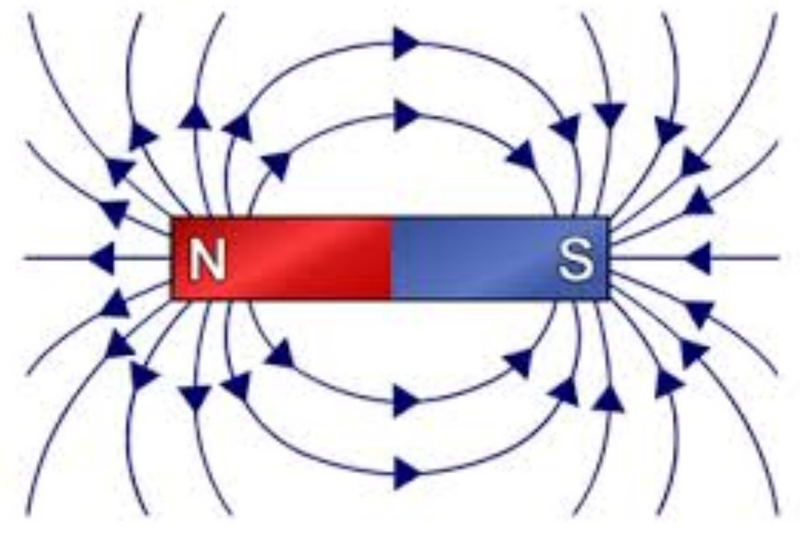
- These lines are like that of two particles, except the field lines do not go through the magnet itself.
- Magnetic field lines look noticeably similar to electric field lines when there are two separate magnets at play.
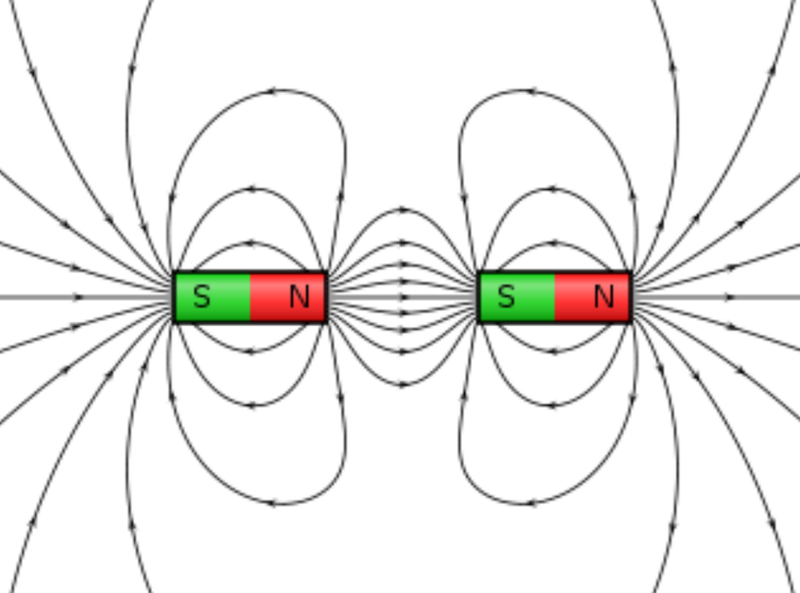
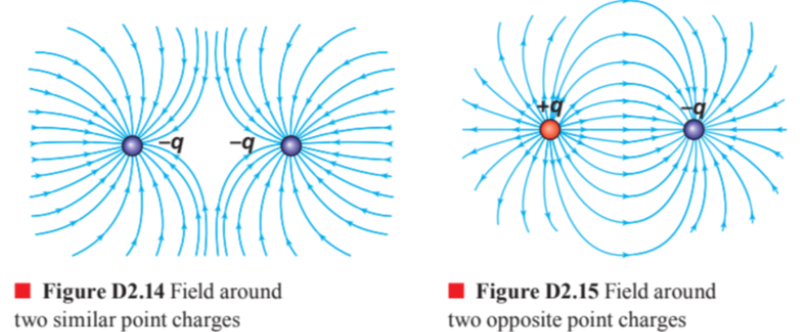
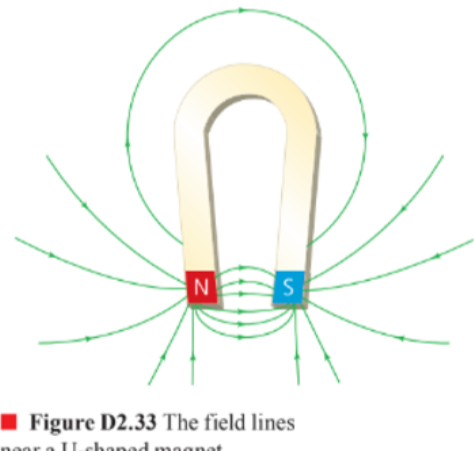
- While some of the lines may be cut off, it is only because they don't fit into the image.
- If we were to zoom out we would see that all of the magnetic field lines loop around.
Attracting and Repelling Fields
The field in-between two separate opposite poles forms a uniform magnetic field, as the field lines are straight and evenly spaced.
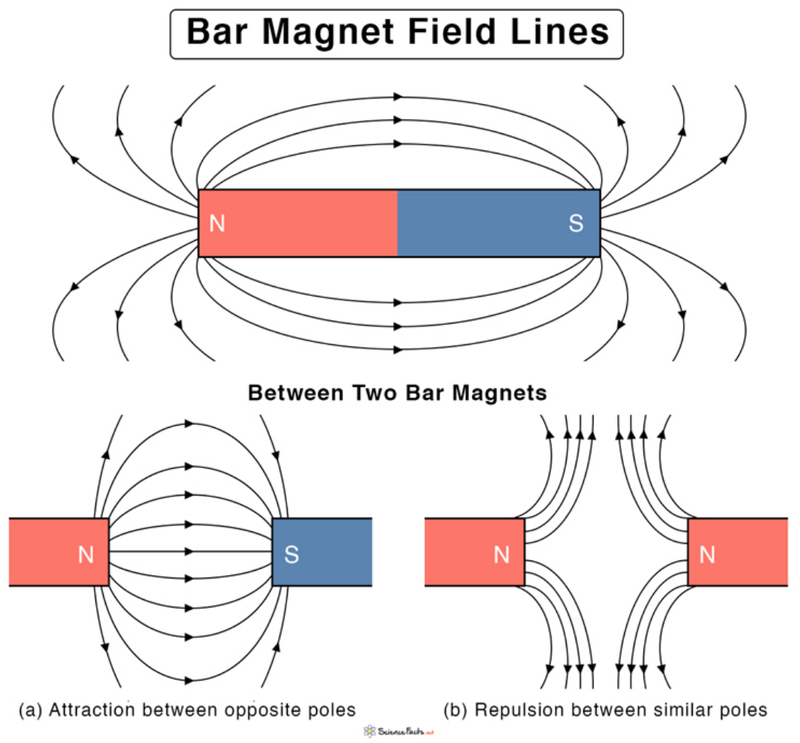
- Just like in electric fields, two similar poles (similar charges in the case of electric fields) will lead to the magnetic fields lines warping away from each other.
Uniform Magnetic Fields
- Just like how two oppositely-charged parallel plates can form uniform electric fields, two oppositely-charged magnetic plates of opposite poles can create a uniform magnetic field.
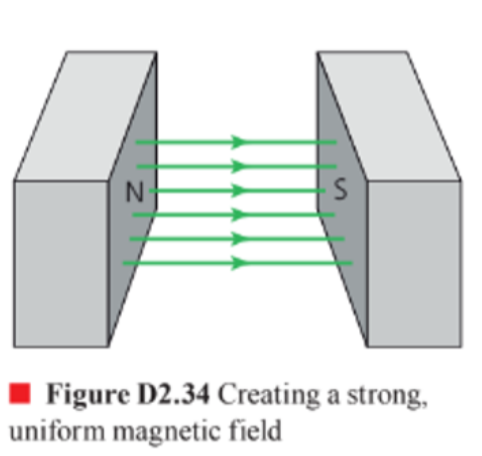
Induced Magnetism
- While some materials, such as magnetite and neodymium are naturally magnetic, other materials, such as iron or nickel can be magnetized when in the presence of a magnetic field.

- This leads to the materials temporarily acting like magnets.
- Their magnetic properties can be moved through physical force or heating, for example.
Magnetic Field Around a Current-Carrying Wire
- Magnetic fields are produced around all moving charges.
- A movement of charge is called a current, and it is indicated by I and measured in amperes.
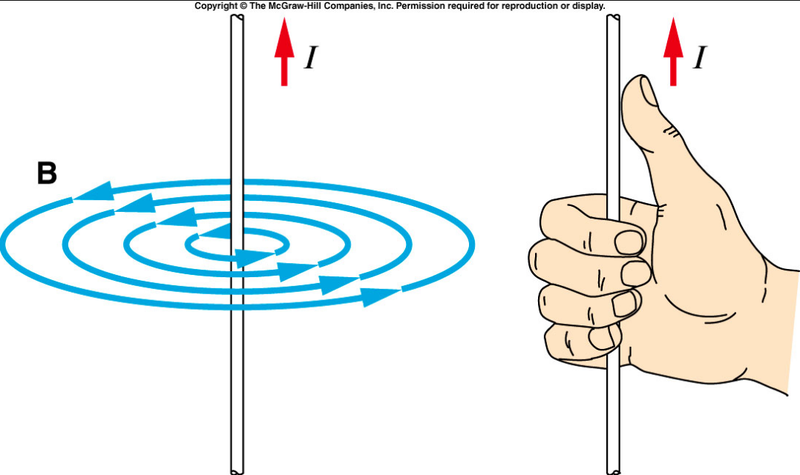
- Charges moving through a wire create a circular charge around them.
- The direction of the field can be remembered using the right hand rule, where you make a thumbs up.
- Your thumb is the direction of the current and your other fingers "wrap around" the wire in the direction of the magnetic field.
Diagrams of a Magnetic Field Around a Current-Carrying Wire
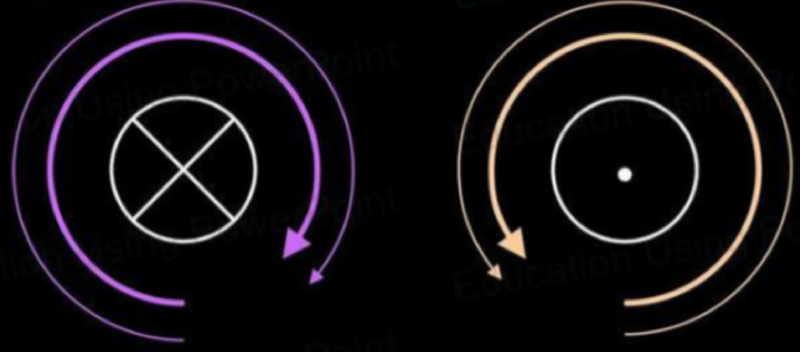
- A current-carrying wire can also be drawn 2-dimensionally from a cross-section view.
- The X shows that the current is going into the page.
- The point shows that the current is coming out of the page towards you.
- It helps to imagine the direction of the current as an arrow, with the tail feathers being the X and the point being the head of the arrow.
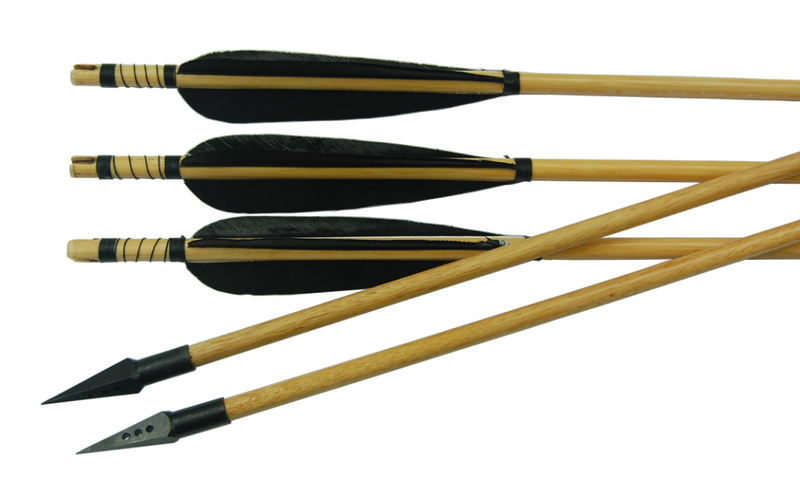
- Sometimes the X and point symbols are used to indicate the direction of magnetic field lines, and they work in the same way as when used to show the direction of current.
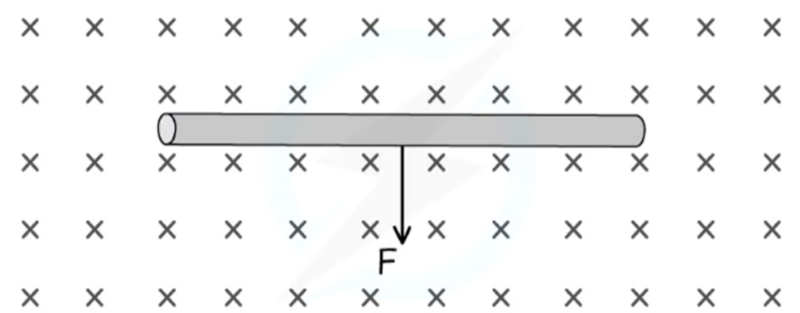
Magnetic Fields Around Coils and Solenoids
- We know that a magnetic field is produced when a current is travelling through a wire.
- However, this field can be amplified through the use of coils and solenoids (solenoids are coils designed specifically to produce a magnetic field).
- Solenoids are series of a wire that is turned around to create a helix-like shape.
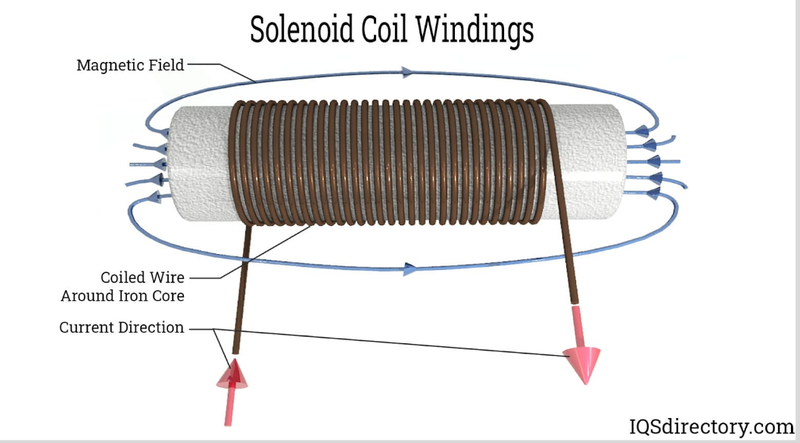
- The result is that the magnetic fields around the wire add up, leading to a stronger overall field.
- The solenoid ends up functioning like a normal magnet, but now the magnetic field can be controlled by adjusting the current!
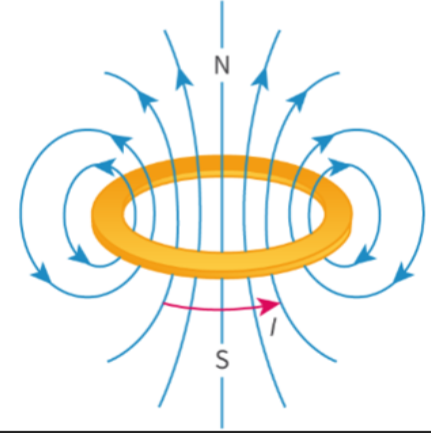
- The single turn of a coil looks much more like a standard current-carrying wire, with the magnetic field being circular around the wire.
- You can use the right hand rule to find the direction of the magnetic field, by imagining your hand following the direction of the current through the wire.
- A solenoid has hundreds of turns, leading to the magnetic field being much stronger, where in a single wire it is barely noticeable.
2-Dimensional Solenoid Drawings
- Like a single current-carrying wire, solenoids can also be drawn in two dimensions.
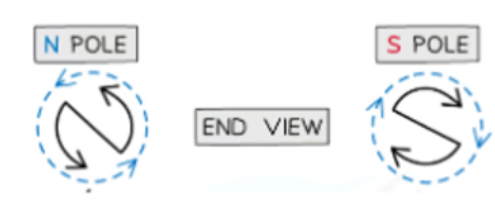
- The arrows show the direction of the current as it travels through the wire.
- In the north pole view, the magnetic field is coming out of the page and looping back into the sides.
- In the south pole view, the magnetic field is coming out of the sides of the coil and looping back into the coil.
Magnetic Force on a Current-Carrying Conductor
- When a charge is moving within a magnetic field, it experiences forces which are perpendicular to its movement.
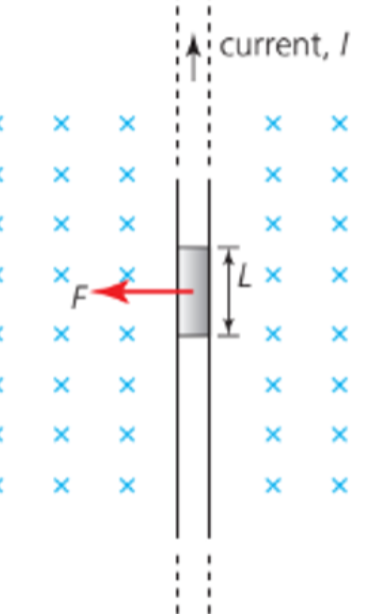
- The force it experiences can be found using the left-hand rule!
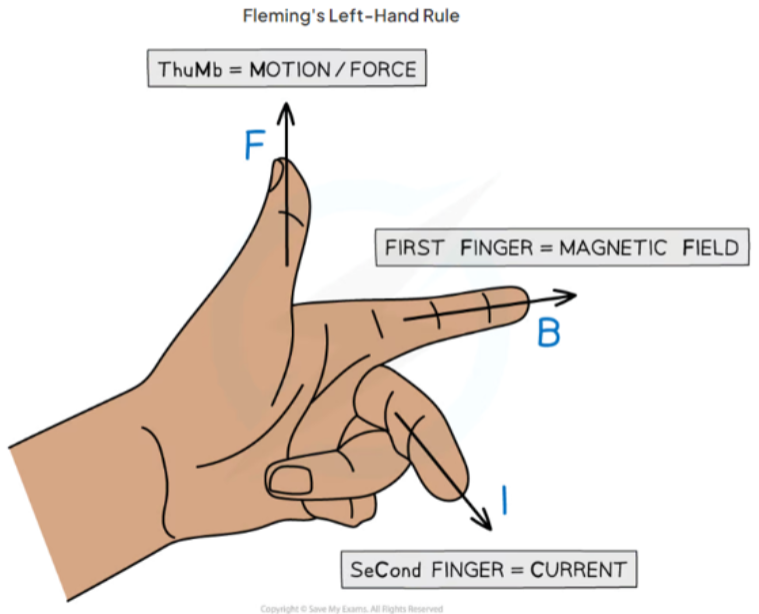
- Here's a neat real-life example!
- The size of the force on the wire depends on:
The strength of the magnetic field.
The current in the wire.
The length of the wire in the field.
The angle of the magnetic field relative to current.
- These things are related through the formula:
F = BILsinθ
- I is current, and L is the length of the wire in the field.
- θ is the angle between the conductor and the field lines. If the conductor is parallel to the field lines then θ = 0.
- B is a vector quantity called magnetic flux density.
- Magnetic flux density is measured in the unit Teslas, T.

- A particle, carrying a charge of one coulomb (C), and moving perpendicularly through a magnetic field of one tesla, at a speed of one metre per second (m/s), experiences a force with magnitude one newton (N).
- Teslas can also be described using other units, such as:

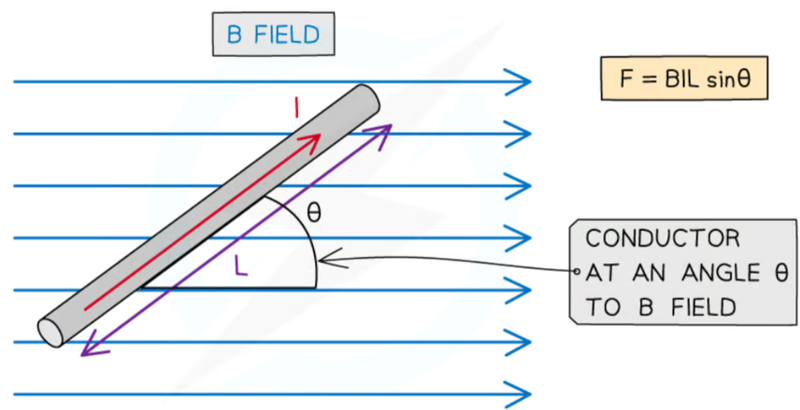
Magnetic Permeability
- Magnetic permeability is the ability of a material to support the formation of a magnetic field inside itself.
- Materials with high magnetic permeability will warp the magnetic field lines towards themselves, whereas materials with low magnetic permeability will ignore the magnetic field.
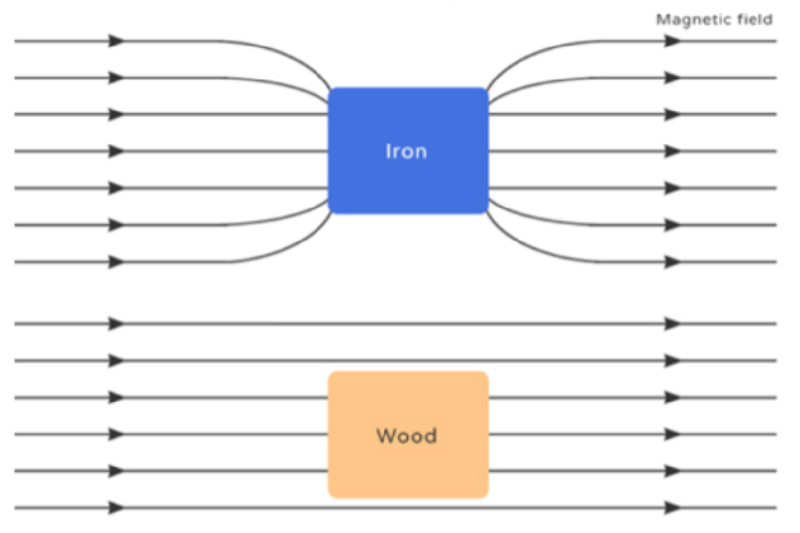
- The permeability of free space, μ₀ is a fundamental constant that represents the ability of a vacuum to transfer a magnetic force and field.
- The magnetic field strength around a straight current depends on:
The magnitude of the current, I.
The perpendicular distance from the wire, r.
The magnetic permeability of the air surrounding the wire (roughly equal to the permeability of free space).

Sources
https://physics-12th.blogspot.com/p/blog-page_22.html
https://animalia-life.club/qa/pictures/shape-of-magnetic-field-lines
https://www.difference.wiki/coil-vs-solenoid/
https://www.iqsdirectory.com/articles/solenoid-valve/3-way-solenoid-valves.html
https://www.geeksforgeeks.org/magnetic-force-on-a-current-carrying-wire/